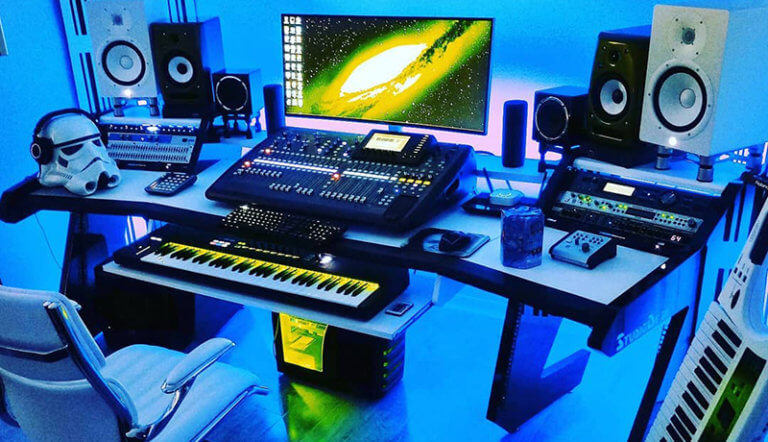Creating a soundproof studio at home is essential for achieving professional-quality audio recordings without unwanted background noise or disturbances. In this guide, we will explore some tips and techniques to help you build a DIY soundproof studio for your home recording needs.

1. Choosing the Right Space:
a. Select a Room: Choose a room with minimal external noise and vibrations. Basements or rooms with thick walls are ideal, as they naturally provide better sound isolation.
b. Size and Shape: Consider the size and shape of the room. Irregular shapes with angles and corners can help reduce sound reflections and improve acoustics.
2. Soundproofing Techniques:
a. Acoustic Treatment: Use acoustic panels, bass traps, diffusers, and foam panels to absorb and reduce echoes, reverberations, and unwanted reflections within the room.
b. Sealing Gaps: Seal any gaps, cracks, or air leaks in windows, doors, and walls using weatherstripping, door sweeps, acoustic caulking, or soundproof curtains to prevent sound leakage.
c. Double Drywall: Install an additional layer of drywall with a damping compound between the existing wall and the new layer to add mass and reduce sound transmission.
d. Soundproofing Materials: Consider using mass-loaded vinyl, soundproof curtains, or soundproofing insulation to further enhance sound isolation.
3. Floor and Ceiling Considerations:
a. Floating Floor: Install a floating floor with soundproof underlayment or rubber mats to reduce impact noise transmission, especially if you have neighbors or shared spaces below.
b. Ceiling Treatments: Apply acoustic treatment to the ceiling, such as hanging acoustic panels or installing a suspended ceiling with soundproofing materials to reduce sound reflections.
4. Doors and Windows:
a. Solid Core Doors: Replace hollow core doors with solid core doors, which provide better sound insulation and reduce sound leakage.
b. Door Sealing: Apply weatherstripping and door sweeps around the edges of the doors to create a tight seal and prevent sound leakage.
c. Window Treatments: Install double-pane windows or use window inserts with acoustic laminated glass to minimize external noise penetration.
5. Ventilation and HVAC:
a. Duct Silencers: Install duct silencers or sound attenuators in the ventilation system to reduce noise transmission through air ducts.
b. HVAC Noise Control: Isolate the HVAC unit by placing it on vibration isolation pads or using soundproof enclosures to minimize mechanical noise.
6. Equipment Placement and Isolation:
a. Shock Mounts and Isolation Pads: Use shock mounts for microphones and isolation pads for speakers and other equipment to reduce vibrations and prevent noise transfer.
b. Reflection Filters: Place reflection filters behind the microphone to reduce room reflections and capture cleaner recordings.
7. Furniture and Room Arrangement:
a. Bass Traps: Position bass traps in corners where low-frequency sound tends to accumulate, improving the overall acoustic balance of the room.
b. Diffusers: Use diffusers to scatter sound waves and minimize standing waves or resonances within the room.
c. Strategic Furniture Placement: Arrange furniture and equipment strategically to break up sound reflections and create a more acoustically balanced space.
8. Testing and Fine-tuning:
a. Monitor the Room: Use a sound level meter or smartphone app to measure the ambient noise level and identify any remaining noise sources or reflections.
b. Record and Listen: Record test recordings in the room and listen back for any unwanted noise, echoes, or artifacts. Make adjustments as necessary.
Conclusion:
Building a DIY soundproof studio at home is an exciting and rewarding project for achieving high-quality audio recordings. By following the tips and techniques outlined in this guide, you can create a space with minimal sound leakage, reduced external noise, and improved acoustics. Remember to assess your specific needs, budget, and available space when planning your DIY soundproof studio. Continuously experiment, fine-tune, and upgrade your setup based on your recording requirements and preferences. Enjoy the process and unleash your creativity in your professionally soundproofed home recording studio.